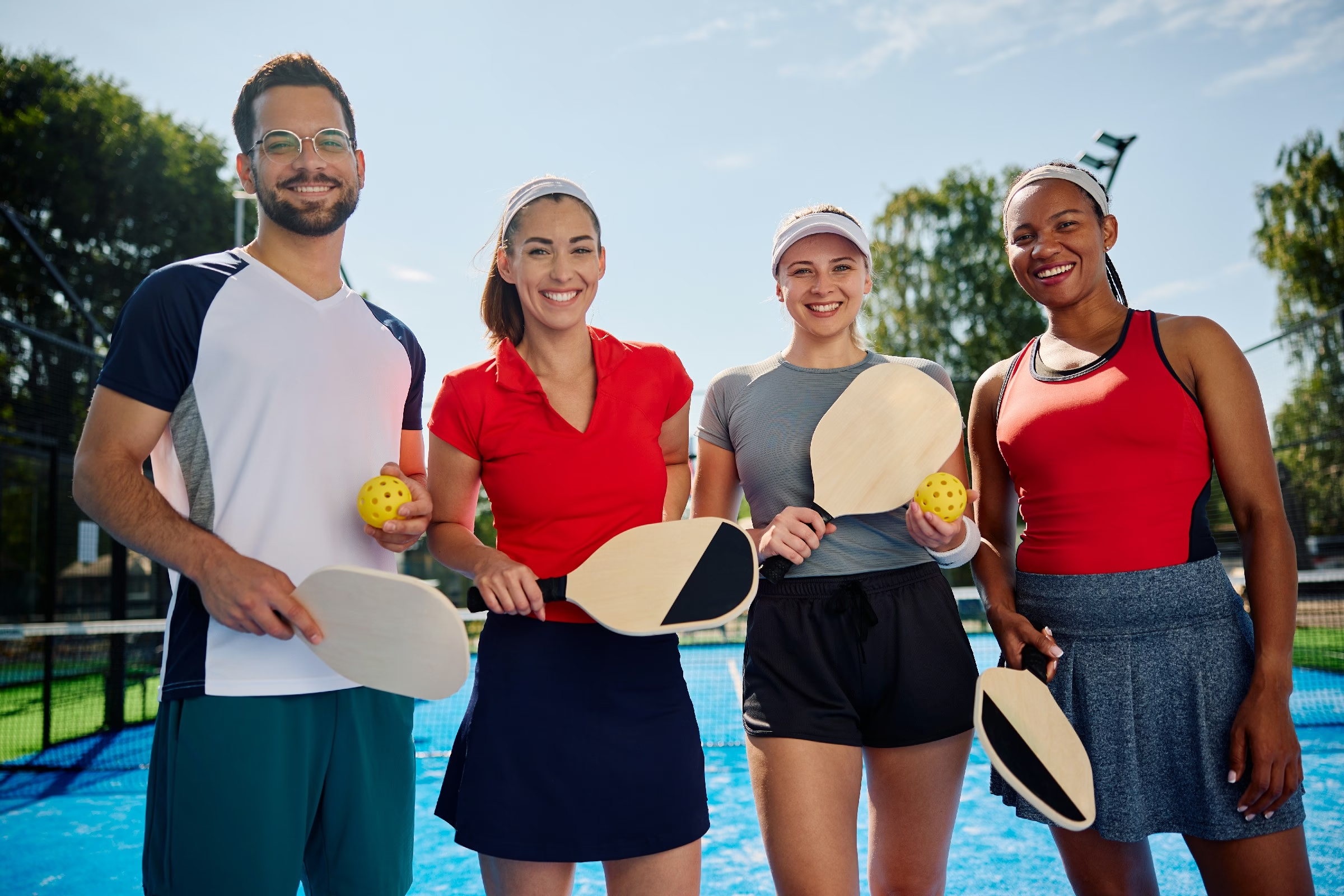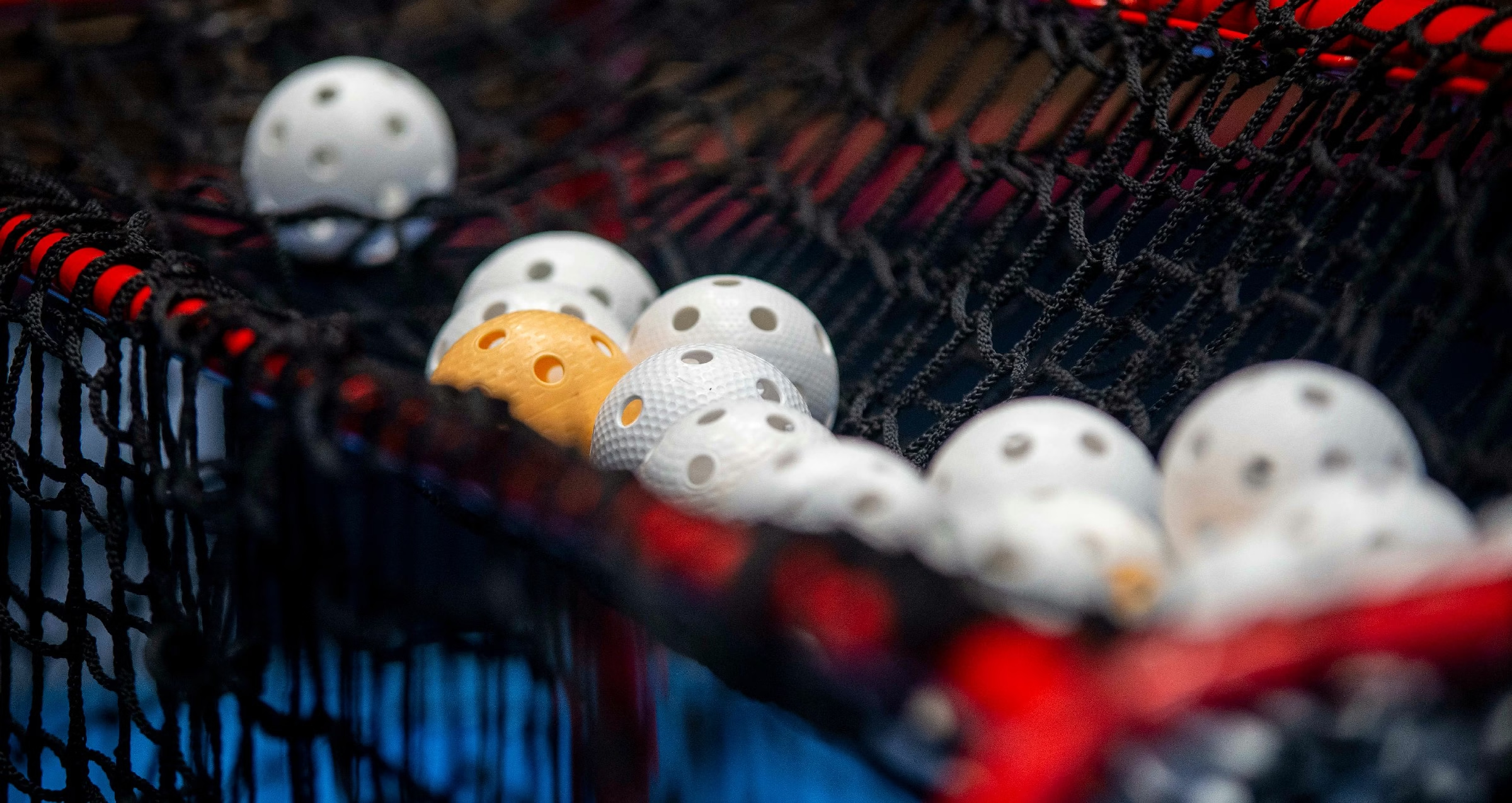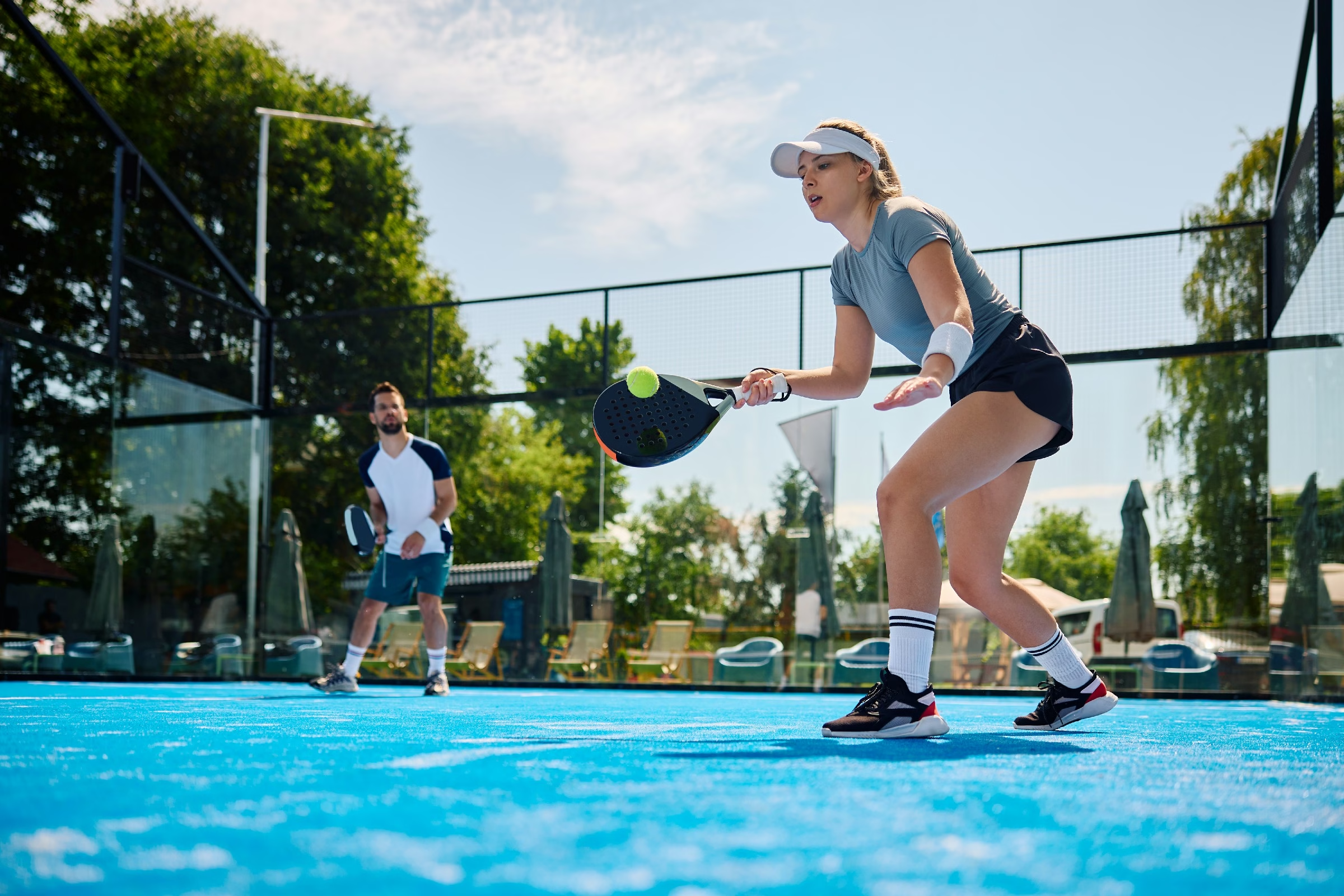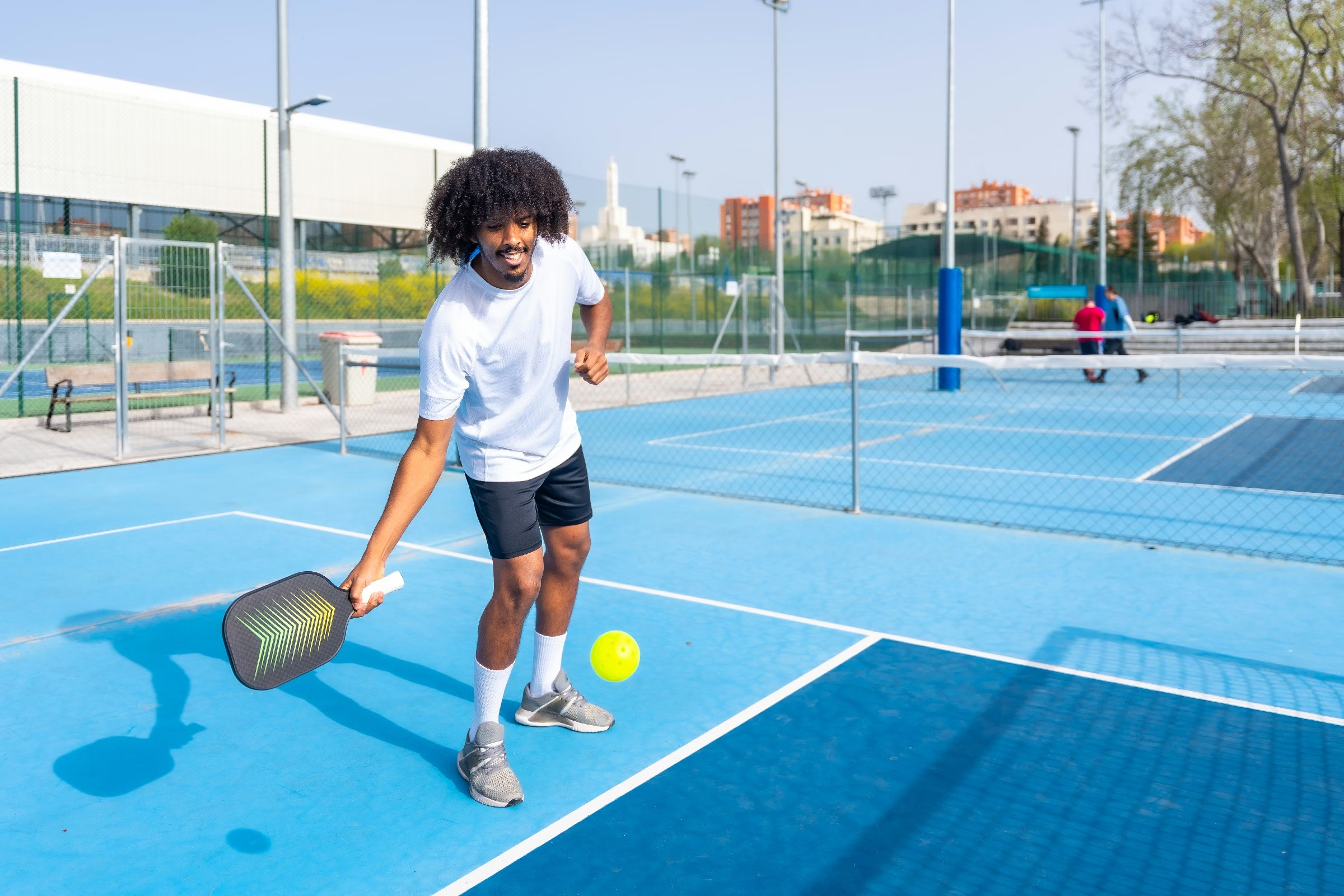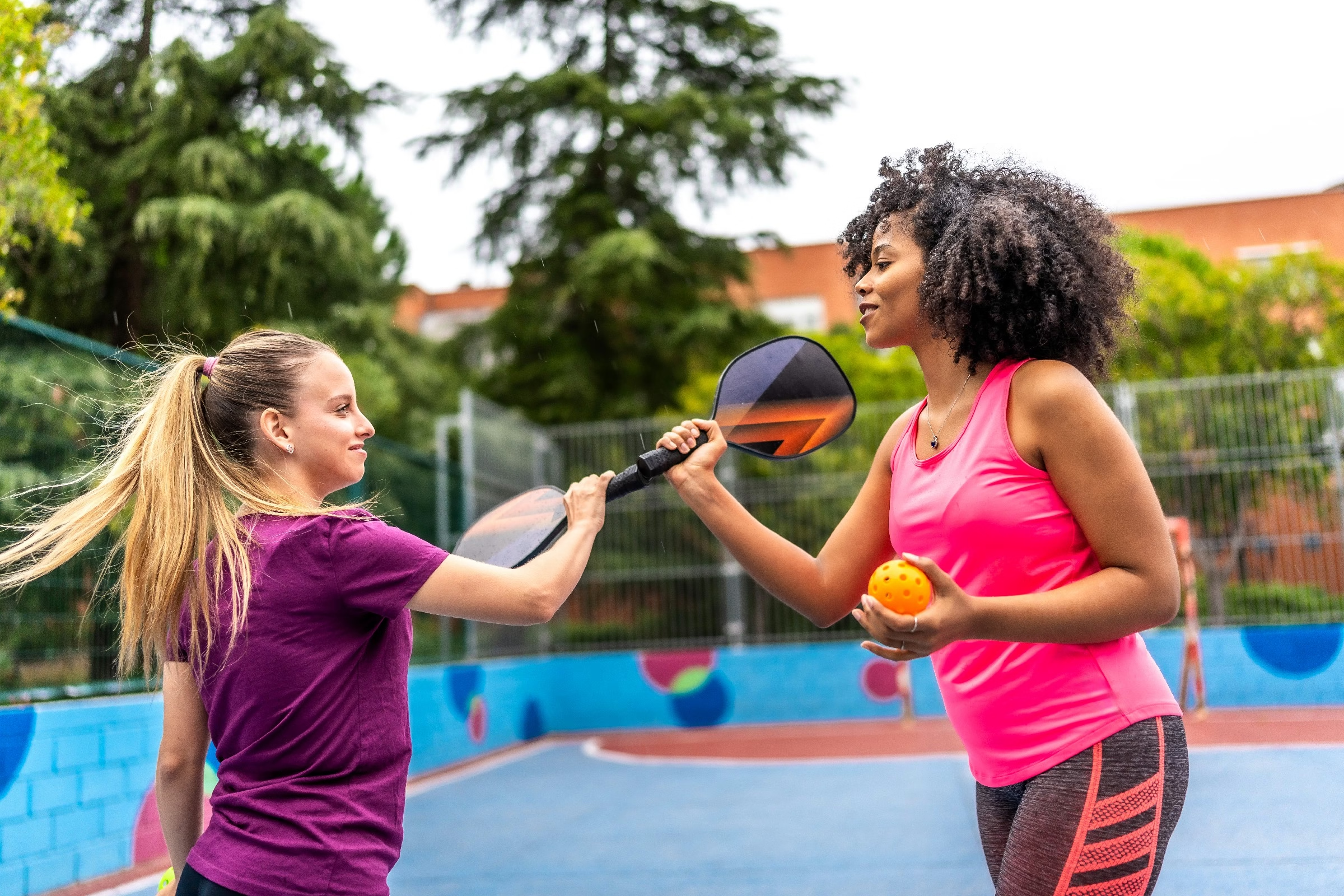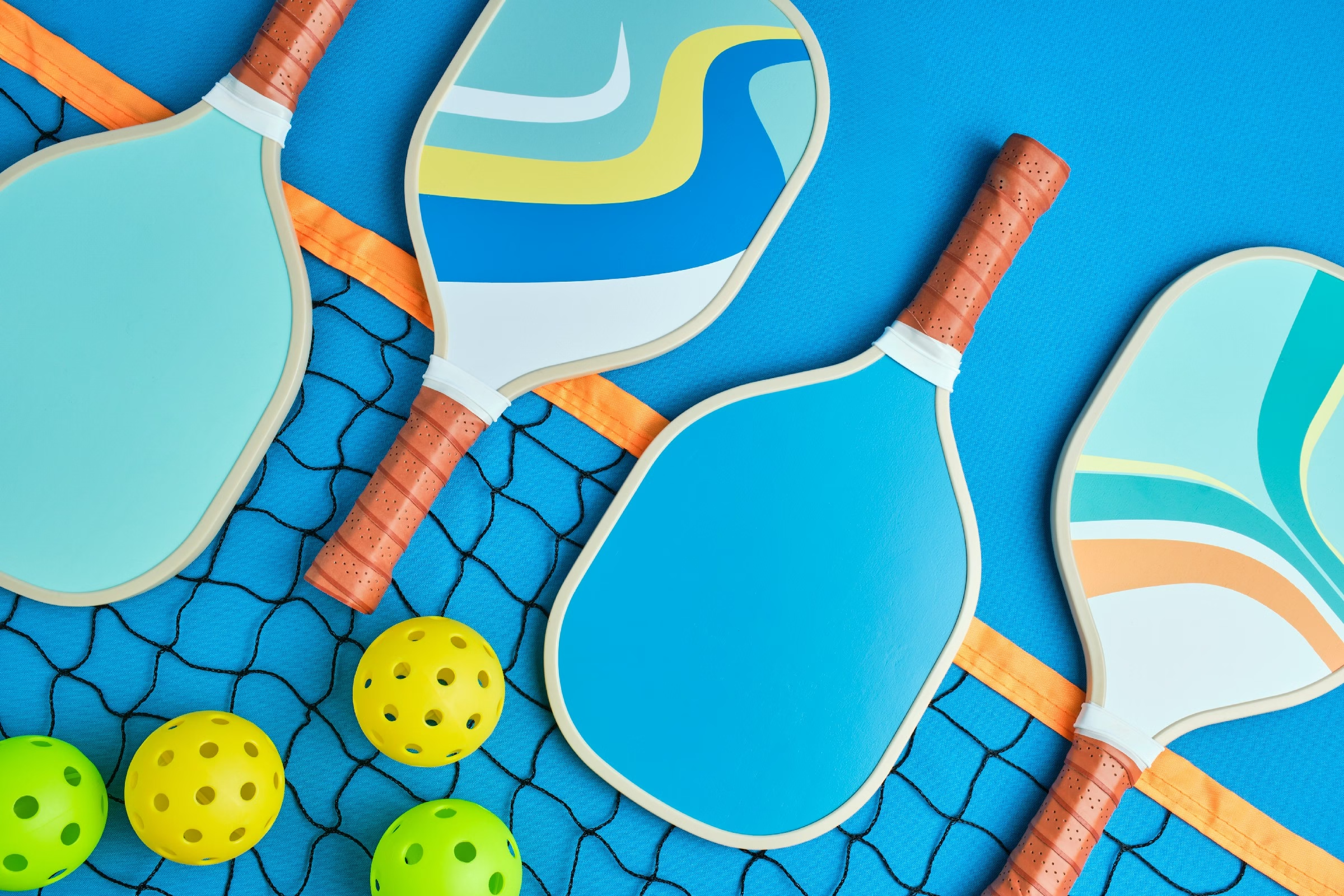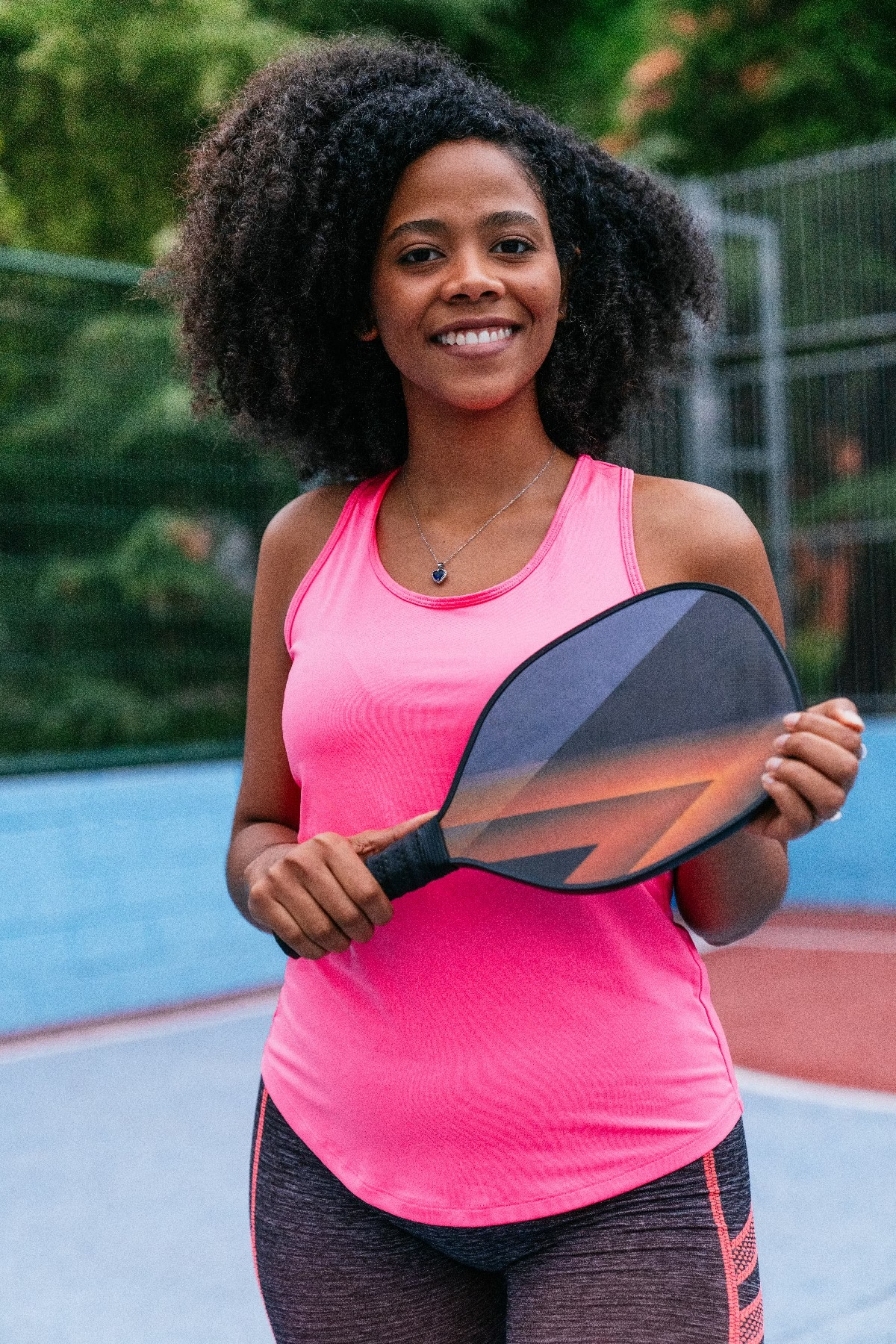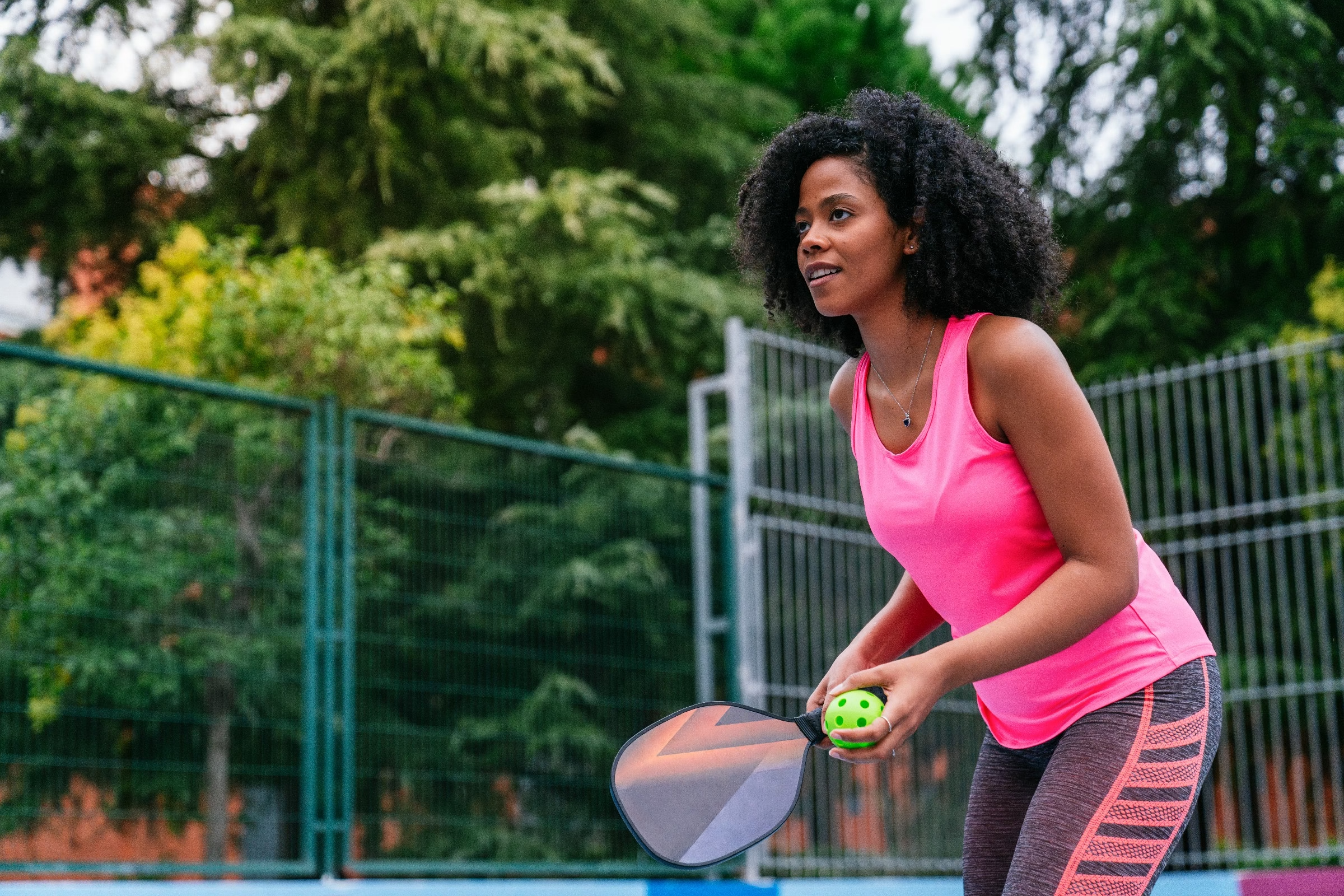Blog
what is a good pickleball paddle made of
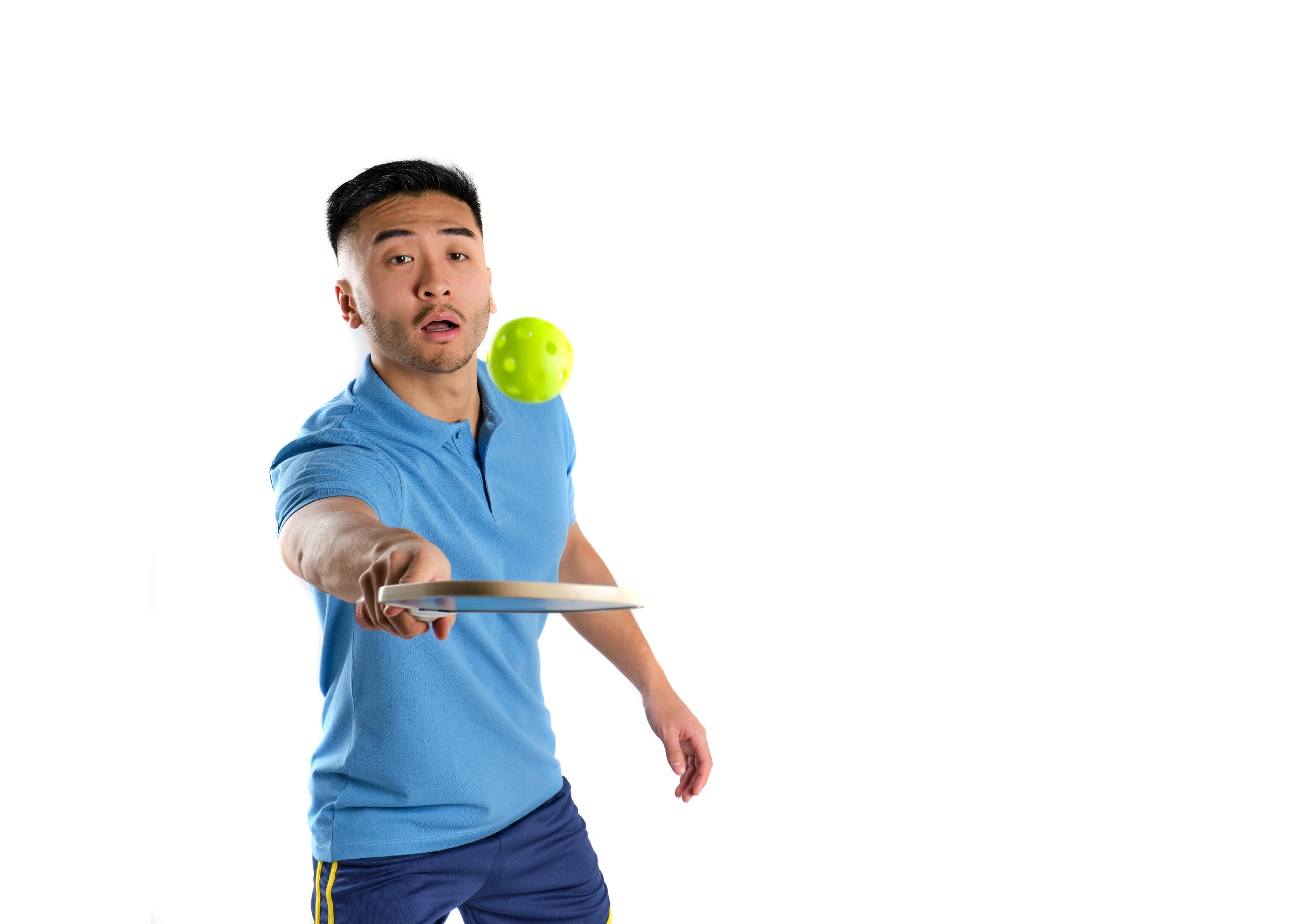
in the vibrant realm of pickleball, were the rhythmic sound of paddles striking balls fills the air and kind competition thrives, choosing the right equipment can make all the difference.Among the myriad selections on the market, the pickleball paddle stands out as a crucial element that can influence yoru performance and enjoyment of the game. But what exactly constitutes a good pickleball paddle? As players navigate the options— from weight to grip size to material—understanding the components that contribute to a high-quality paddle is essential. In this article, we will delve into the materials that define excellent pickleball paddles, exploring how each aspect can enhance your gameplay and help you find the perfect match for your style on the court.
Table of Contents
- Exploring the Core materials of Top-Performance Pickleball Paddles
- The Impact of Paddle Shape and Size on Playability
- Understanding the Role of Grip and Comfort in Paddle Selection
- Comparing Surface Textures: Smooth vs. Textured for Spin and Control
- Evaluating Weight Distribution for Enhanced Maneuverability
- Recommended Brands and Models for Every Skill Level
- Q&A
- In Conclusion
exploring the Core Materials of Top-Performance Pickleball Paddles
When diving into the world of pickleball paddles, understanding the core materials is crucial for selecting a high-performance option. Paddle cores primarily influence the weight, stiffness, and responsiveness. The three most common core materials utilized in top-quality paddles are:
- polymer Honeycomb: Known for its lightweight nature, polymer honeycomb cores offer a soft touch and excellent ball control. This material provides dampened vibration on impact, making it a popular choice among recreational players.
- Paper Honeycomb: Often seen in budget-friendly models, paper honeycomb cores deliver good power and a bit heavier feel. Although they may lack the advanced technologies of higher-end options,they still serve as reliable choices for beginners.
- Aluminum Honeycomb: These paddles are favored for their great pop and durability. Aluminum cores tend to excel in producing a loud sound upon impact,which is often preferred by more experienced players looking to enhance their game.
The surface material that envelops the core also plays a critical role in paddle performance. Manufacturers typically utilize a blend of materials to achieve the desired balance of power and control. the most prominent surface materials include:
| Surface Material | Features |
|---|---|
| Fiberglass | Provides an excellent touch and feel with good power; often used in intermediate to advanced paddles. |
| Carbon Fiber | Renowned for its lightness and extreme stiffness, offering unparalleled power and control for competitive players. |
| Composite Materials | A mix of various fibers that aim for an optimal balance of durability, power, and control. |
the grip comfort and handle shape significantly impact the player’s experience. The choice of material for the grip can enhance control and reduce slippage during play. Key considerations include:
- Comfort Grip: Soft, cushioned materials reduce hand fatigue over long matches.
- texture: Designed to provide added traction for confident swings.
- Handle Shape: varies from traditional to ergonomic, enabling personalized comfort for different playing styles.
The Impact of Paddle Shape and Size on Playability
The design of a pickleball paddle significantly influences its playability, with the shape and size playing critical roles in a player’s performance on the court. Consider how the width of the paddle can enhance control or power. Wider paddles provide a larger sweet spot, making it easier to hit the ball consistently. In contrast,narrower paddles can offer enhanced maneuverability,allowing for more rapid wrist movements when responding to fast shots.Depending on a player’s style, the choice between width and control becomes vital.
Another factor worth noting is the length of the paddle. Longer paddles generally allow for greater reach, which can be favorable for intercepting stray shots. however, this added length may come at the cost of stability, as a longer paddle can be more challenging to wield with precision. Hear are some characteristics to consider:
- long Paddles: Increased reach, less control
- Short Paddles: Enhanced maneuverability, easier control
the thickness of the paddle also contributes to its overall feel and the type of play. Thicker paddles may deliver more stability upon impact, reducing vibrations that can detract from shot accuracy. Conversely, thinner paddles can feel more connected to the ball, allowing for a more tactile experience. An understanding of these elements can help players choose a paddle that best complements their individual playing style.
Understanding the Role of Grip and Comfort in Paddle Selection
When selecting a paddle for pickleball,two pivotal factors to consider are grip and comfort. The grip not only influences how securely you can hold the paddle but also affects the overall control you have during games. A quality paddle typically offers various grip sizes, allowing players to choose a style that best fits their hand dimensions. Common grip sizes include:
- Small - Generally measures 4 inches, suitable for players with smaller hands.
- Medium – Typically around 4 1/4 inches, ideal for average-sized hands.
- Large – Usually about 4 1/2 inches, preferred by those with larger hands.
Comfort is equally essential, as it directly relates to the player’s stamina and performance during extended play. A paddle that feels cozy in your hand will enable you to execute powerful and precise shots without causing undue strain. Important factors to consider include:
- Material – The type of material used in the paddle’s handle can significantly impact comfort.
- Cushioning – paddles with added cushioning can reduce vibration and enhance grip comfort.
- Weight - A lightweight paddle may offer better maneuverability, while a heavier one can provide more power.
To further clarify grip and comfort preferences, here’s a comparison of popular paddle materials and their characteristics:
| Material | Grip type | Comfort Level |
|---|---|---|
| Wood | Standard | Moderate |
| Composite | Advanced grip options | High |
| Graphite | Premium | Very high |
Comparing Surface Textures: Smooth vs. Textured for Spin and Control
When choosing between smooth and textured surfaces for pickleball paddles, it’s essential to understand how each impacts performance. A smooth surface provides a consistent feel and can enhance control during gameplay. Players adept at precision shots frequently enough favor smooth paddles as they allow for more predictable ball placement.With minimal grip, the paddle’s clean surface helps maintain a direct hit, making it easier to execute flat, controlled shots.
On the other hand, textured paddles are designed to maximize spin potential. The added grip from a textured surface allows players to handle the ball more aggressively,applying more topspin or backspin. This can be especially advantageous when trying to outmaneuver opponents, as it creates unpredictable ball trajectories. Examples of textured surfaces include:
- Holographic finishes
- Rougher polymer surfaces
- Micro-dimpled textures
Ultimately, the choice between smooth and textured surfaces hinges on individual playing style and preferences. Players who prioritize spin and aggressive plays may gravitate towards textured options, while those who value control and precision might find satisfaction in smoother paddles. A player’s skill level and strategic approach to the game can significantly influence which paddle type will complement their performance most effectively.
Evaluating Weight Distribution for Enhanced Maneuverability
The design of a pickleball paddle significantly influences its performance, particularly when it comes to weight distribution. Understanding how weight is allocated across the paddle can lead to improved maneuverability, allowing players to react quickly and effectively during play. When examining paddles, take note of the balance point, which refers to the distribution of weight along the paddle’s length. Paddles can be classified into three categories based on their balance:
- Head-heavy Paddles: These paddles have more weight towards the paddle head, offering increased power during strikes but requiring more effort for quick maneuvers.
- Even-Balance Paddles: These paddles evenly distribute weight for a balanced feel, providing a good mix of power and maneuverability.
- Light-Weight or Handle-Heavy Paddles: With more weight near the handle, these paddles allow for faster swings and superior control, making them ideal for finesse players.
Along with weight distribution, the material composition of the paddle also plays a vital role in handling and control. Lightweight materials such as polymer and composite blends are frequently used, allowing players to maintain speed without sacrificing strength. It’s also essential to consider the inner core structure of the paddle, as it can influence the overall feel and performance. The most common core materials include:
| Core Material | Characteristics |
|---|---|
| Honeycomb Polypropylene | Excellent shock absorption, lightweight, and durable. |
| Nomex | Stiffness for added power, great for aggressive play styles. |
| Fiberglass | Offers a softer feel and generous ball control, ideal for all-round play. |
Players should remember that personal preference and playing style greatly influence what configuration will work best for them. By thoroughly evaluating weight distribution alongside material properties, players can select a paddle that enhances their overall game. Experimenting with different paddles can reveal the optimal balance that complements individual skills,ensuring a refined experience on the court.
Recommended Brands and Models for Every Skill Level
Choosing the right pickleball paddle varies significantly depending on your skill level.Beginners typically benefit from paddles that offer a larger sweet spot and more forgiving materials. The Onix Z5 Graphite Paddle is a fantastic choice for those just starting. Its balanced weight and wider hitting surface provide excellent control, while the graphite face enhances durability. Another great option is the Rally Meister Paddle, which is affordably priced and crafted with composite materials, making it lightweight and easy to handle during extended play sessions.
Intermediate players may look for paddles that offer a blend of power and control. The Selkirk Amped Paddle stands out in this category with its innovative FiberFlex technology that promotes a softer touch and enhanced spin. Additionally, the Paddletek Tempest Wave grants players more precision and power, thanks to its polymer core that reduces vibrations. These paddles are designed to elevate your game while maintaining comfort and responsiveness during play.
For advanced players, performance is crucial, and investing in high-end paddles can make a significant difference. The Blade Pro Paddle is a top-tier selection, featuring a high-quality carbon fiber surface that maximizes ball spin and precision. The Prince Response Pro is another excellent choice with its unique oval shape optimizing grip and control. both of these paddles are engineered for serious competitors who demand superior performance on the court.
Q&A
Q&A: What is a Good Pickleball paddle Made of?
Q1: what materials are commonly used in pickleball paddles?
A1: Pickleball paddles are typically made from three primary materials: wood, composite, and graphite. Each material has unique qualities that cater to different playing styles and preferences. Wood paddles are traditional and frequently enough more affordable, while composite paddles combine materials like fiberglass and plastic for a balanced feel. Graphite paddles are lightweight and durable,favored by many competitive players for their responsiveness.
Q2: What are the advantages of a wood paddle?
A2: Wood paddles are sturdy and can provide a solid striking surface, making them an excellent choice for beginners. They offer great durability and are frequently enough less expensive than their composite or graphite counterparts. Though, they can be heavier, which may lead to fatigue during extended play.
Q3: How do composite paddles differ from graphite paddles?
A3: Composite paddles are constructed using a blend of materials, often featuring a core made from polymer, Nomex, or aluminum, layered with fiberglass or fiberglass-like materials.This results in a paddle that offers a great combination of power, control, and a larger sweet spot. In contrast, graphite paddles, known for their lightweight and responsive nature, provide excellent touch and control, making them suitable for advanced players who rely on finesse in their game.
Q4: Can I customize my paddle’s materials?
A4: While you can’t customize the actual materials of a paddle, you can choose from various brands that offer different combinations of the aforementioned materials. Many companies provide options for grip size, paddle shape, and weight, allowing players to tailor their paddles to better suit their needs, even if the core materials remain the same.Q5: What should I consider when choosing a paddle material?
A5: When selecting a pickleball paddle, consider your skill level, playing style, and physical capabilities.Beginners might find wooden paddles preferable for their durability and cost-effectiveness, while intermediate players could benefit from the added control of composite paddles. Advanced players often gravitate towards graphite for its lightweight design and responsive feel. Testing different paddles can help determine which material aligns with your personal preferences.
Q6: Are there any trends in pickleball paddle materials?
A6: Yes, as pickleball continues to grow in popularity, manufacturers are experimenting with new materials and technologies. Some paddles now incorporate carbon fiber and advanced polymer cores designed to enhance performance while reducing weight and vibrations. Players are increasingly looking for paddles that offer both innovation and improved playability, reflecting the sport’s evolution.
Q7: How can I maintain my pickleball paddle for longevity?
A7: To ensure your paddle lasts, clean it regularly with mild soap and water to remove any dirt or residue, avoiding harsh chemicals. Store it in a protective case to prevent damage and keep it away from extreme temperatures that can warp the materials. Taking these steps will help maintain the integrity of your paddle, nonetheless of its material.
Q8: Does the paddle’s material affect gameplay?
A8: Absolutely! The material of your paddle significantly influences how you play. A heavier wood paddle may provide power but might sacrifice agility, while a lightweight graphite paddle can enhance precision and finesse. Understanding how each material affects feel, control, and power can help players choose a paddle that complements their unique playing style.
In Conclusion
choosing the right pickleball paddle is much more than a simple preference; it’s a blend of material science and personal style. understanding the components that contribute to a paddle’s performance can enhance your game and elevate your enjoyment on the court. From the solid yet lightweight nature of polymer cores to the responsive touch of composite surfaces, each material offers unique benefits that cater to different playing styles and skill levels. As you weigh your options, consider how the characteristics of each component resonate with your own game. With the right paddle in hand, you’re not just playing a sport — you’re engaging in a dynamic dance of strategy, skill, and fun. So, whether you’re a seasoned pro or a beginner taking your first swings, remember: the heart of pickleball starts with the paddle you choose. Happy playing!

